Media | Articles
When a cursed Pantera roamed the midnight highways of Tokyo
In the early hours of November 28, 1981, a crimson wedge flitted along the neon-lit streets of Tokyo. At a late-night cafe, a reporter sat nursing a coffee, nerves still jangling from the high-speed shotgun ride along the Tomei expressway. He could still hear the thunderous howl of the big-block V-8 behind driver and passenger, inches from the base of his skull. He sipped his coffee with shaking hands. It had felt like riding with the devil at your heels. Some distance away, at approximately 1:40 a.m., that devil caught up with Garry Mitsunaga and his red Pantera.
That’s how the story goes, anyway. Like most street racing myths, the facts are colored with embellishments and hyperbole.
At the moment of his death, Garry Arran Mitsunaga was already a legend in the Japanese dragstrip and top-speed racing scene. He was an American, born in Hawaii and employed by the Harman Kardon audio group. The company sent him to Tokyo in 1975 to work for one of its Japanese divisions, in sales. Then thirty years old, Mitsunaga was affable and shrewd enough to be a leading salesman at the branch—this despite his limited knowledge of Japanese.

Students of Japanese car culture likely have a particular image in their head of what midnight looks like on the elevated highways of Tokyo. In our Initial D-fueled dreams, Nissan Skylines, and Toyota Supras go door to door on smooth and empty roads, the overhead lights strobing like the pulse of a Eurobeat track. Whether it’s the fictional hill racing of the anime genre or the very real underground top speed contests of Racing Team Mid Night, nighttime in one of the biggest metropolises in the world is the setting for Japanese car culture in the same way that Bonneville is for the American Southwest.
But before the Porsche-vs-Skyline dreams of the 1990s, the streets of Japan were ruled by American V-8s. Even the Japanese automakers themselves couldn’t resist the lure of a small-block Chevy. At the 1968 running of the Japanese Grand Prix—in a deal set up by former U.S. intelligence agent and founder of the Shadow racing team, Don Nichols—Nissan equipped its victorious R381 racing car with a 5.5-liter V-8 specially tuned by MOON speed equipment. The partnership included ex-Prince employee and “father of the Skyline” Shinichiro Sakurai flying to California to sit down with Dean Moon, the guy who helped Carroll Shelby stuff a V-8 in an AC to create the first Cobra.
Marketplace
Buy and sell classics with confidence
By the 1970s, the Japanese economy was booming. A culture of speed wasn’t far behind. On this side of the Pacific, the Datsun 240Z and 510 had proved the Japanese could build sporting coupes and sedans capable of winning race trophies. Performance enthusiasts in Japan snapped up imported Mustangs, and Camaros, and even pickup trucks. Such cross-pollination between SoCal car culture and Yokohama street-rodding continues even today; show up on Sunday morning at Daikoku Parking Area, off the highway in Yokohama bay, and there’ll be some American iron in attendance at Japan’s informal congregation of speed.
Thanks to the research of Charles Smart, who has pored through dozens of magazines, photos, and rare videos of the period, we have some idea of the arc of the Mitsunaga Pantera. Smart runs the Auto Team Retro page on Facebook, which has many gems from the golden age of Japanese street racing.
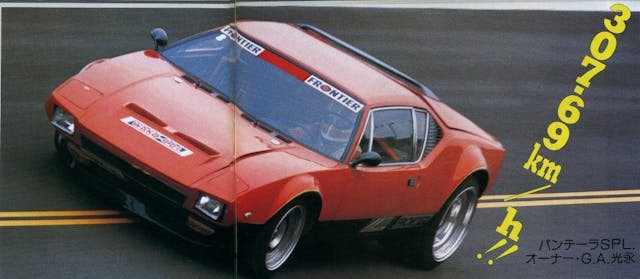
At first, Mitsunaga embraced Japanese performance. He purchased a rotary-powered RX-3, and had it modified. While purchasing tires at a local shop, he ran into a young mechanic named Masaru Hosoki. The two men would form the most unlikely of friendships. According to numerous reports, Hosoki was an ex-bosozuku gang member, one of the motorcycle-riding delinquents who terrorized Japan’s highways at the time. Mitsunaga was a sansei, a third-generation American of Japanese ancestry, and an established company man. What would such a pair have to talk about? Going as fast as possible.
Hosoki got Mitsunaga’s RX-3 running well enough to take a few wins in local drag races. These were mostly run on the airstrips at US airbases, and there was some friendly rivalry between the servicemen and the locals. Later, Hosoki and Mitsunaga created a V-8-powered Nissan Fairlady, equipped with a 327 small-block Chevy engine. At roughly about 2400 pounds and approximately 300 hp, the pan-Pacific Frankenstein’s monster was a beast at the track. It wasn’t remotely street-legal—not with Japan’s strict shaken safety inspections—but Mitsunaga took it to the Tomei anyway.
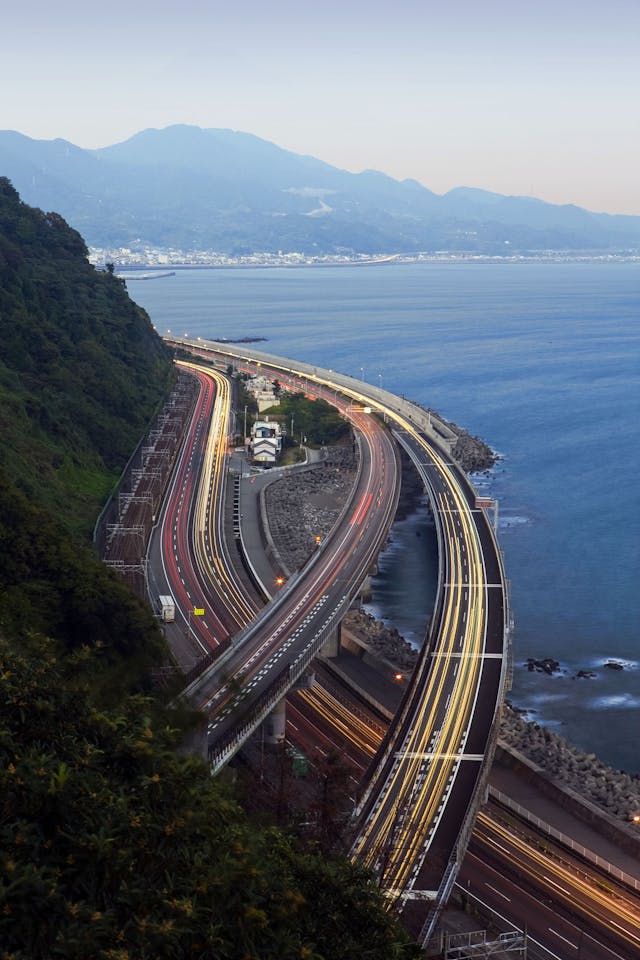
The Tomei Expressway links Tokyo to the major port city of Nagoya, to the east. It was fully completed in 1969 and remains today one of Japan’s busiest roads. The section most popular with Japanese street racers in the late 1970s and early 1980s ran from the Ebina service area to the toll gate just before Tokyo. In the day, traffic thronged the road. Late at night, you’d only see those obsessed with speed. Mitsunaga is said to have covered the seventeen mile section in his V8-Fairlady in about six and a half minutes at an average speed of above 160 mph.
Japan had another, less illicit outlet for top-speed jousting. Also built in the 1960s, for use by the rising Japanese car industry, the Yatabe banked oval was early on used by Toyota to set several speed records with the graceful 2000GT. By the 1980s, it became the place where tuners established their bona fides, with the winners able to brag that they had the fastest car in Japan.
Mitsunaga’s Fairlady fell afoul of increasingly more rigorous regulatory inspections, so he traded it in at a used car dealership. The Fairlady wasn’t worth much, but the car he bought was a little down at heel too: an early De Tomaso Pantera, used hard and put away wet. It was originally black, but the paint was weathered and flecked with chips. The cosmetics didn’t matter. Mitsunaga and Hosoki had plans.
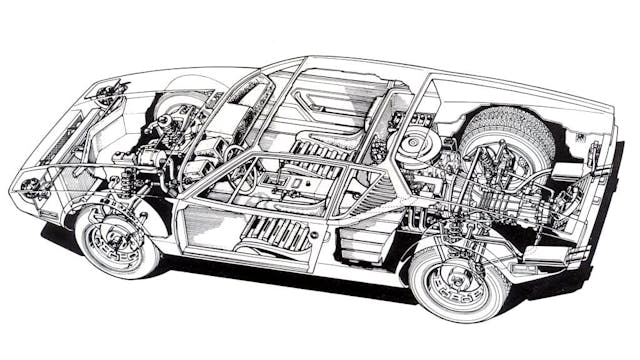
Argentinian-born Alejandro De Tomaso built a number of models bearing his name, but the Pantera is certainly the most famous Designed by U.S.-born Tom Tjaarda, it was made in Modena but had an American heart; namely, a 351-cubic-inch Ford “Cleveland” V-8. De Tomaso produced approximately 7000 Panteras between 1971 and 1992, and the car developed a bit of a reputation in Japan.
Mitsunaga’s De Tomaso wasn’t the only famous Pantera in Japan, by the way. TOPS, a tuner specializing in V-8 builds, fettled a number of Panteras for high-speed running through the early 1980s. It was common to swap out the Ford engine for more powerful Chevy V-8s and, with experience gained modifying Camaros or Pontiac Firebirds, tuners built some real monsters. Before the racers moved to the longer Wangan highways, which favored the endurance capabilities of the Porsche 930, packs of Panteras owned the midnight on the Tomei.
Mitsunaga took this even further with his Pantera. Instead of a small-block Chevy, it had a NASCAR-tuned 454 LS7 big-block. He reportedly paid somewhere in the neighborhood of $80,000 for the engine alone; it had been sourced by Mario Rossi, NASCAR crew chief for the likes of Bobby Allison and Glenn “Fireball” Roberts. Rossi developed several safety innovations in his time, along with perfecting the still-used method of gluing lug nuts onto wheels to speed up pitstop times. Then he disappeared.
Indeed, no-one knows what happened to the mechanic who built this Pantera’s engine. After the huge drug smuggling scandal that rocked NASCAR in 1982, Rossi vanished from the face of the earth, never to be seen again. He supposedly died in a plane crash off the Bahamas … but the plane in question never crashed.
Rossi’s V-8 punched out over 600 hp in the back of the Mitsunaga Pantera. That would be impressive today, and by the standard of 1981 (a contemporary Countach made do with just 375 hp) it’s insane. In early November of 1981, Mitsunaga took his Pantera, newly painted red, to a Yatabe circuit high-speed shoot-out. It emerged triumphant.
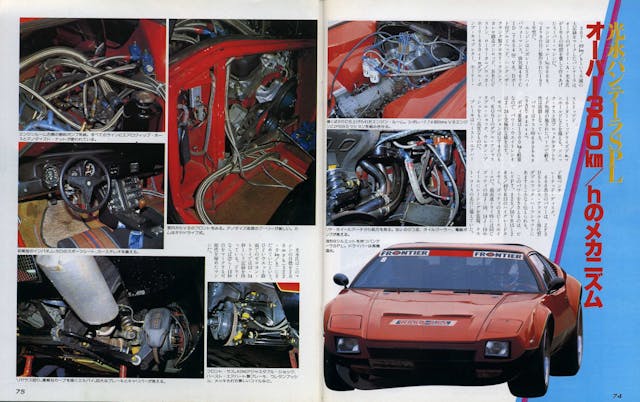
Figuring Yatabe was too dangerous for civilian drivers, and wanting to take the human element of unpredictability out of things, driving duties at this event were performed by professional racers. In the case of the Mitsunaga Pantera, none other than Kunimitsu Takahashi took the wheel. Considered the father of drifting, Takahashi raced in F1, Le Mans, and gave the original hakosuka Skyline GT-R its vaunted fiftieth win.
The Pantera smashed previous records with a decisive 307 km/h (190 mph) showing, making it the then-fastest street car in Japan, and the first to crack the 300 km/h mark at Yatabe. But Mitsunaga was not fully satisfied. Nothing less than above 320 km/h (200 mph) would do. Takahashi is said to have warned him to never drive the Pantera outside of a race track setting. Mitsunaga didn’t listen.
The obsession ended in tragedy. Not long after dropping off that rattled journalist, on a night when it seems like he couldn’t quite hit his goal, Mitsunaga lost control of his Pantera. Perhaps the tires were greasy with heat from the sustained high speeds. Perhaps the engine was just too powerful and unpredictable. Whatever the case, the Pantera spun into a pole, and Garry Mitsunaga was killed instantly.
In death he became a sort of venerated ancestor to the street racing scene. Despite not being born in Japan, he was a hero to many locals, someone who never stopped chasing ever higher speeds. The Mitsunaga Pantera would go on to inspire many, and it would also become a symbol of the danger of this pursuit. A part of it, the five-sped transaxle, made it into one of the TOPS Panteras. The car itself would go on to inspire the “Devil Z” of Wangan Midnight anime fame.
What’s legend and what’s fact we are unlikely to ever know for certain. What we do know, however, is that Garry Mitsunaga and his Pantera dared to dance with the devil in the witching hour.
Check out the Hagerty Media homepage so you don’t miss a single story, or better yet, bookmark it.
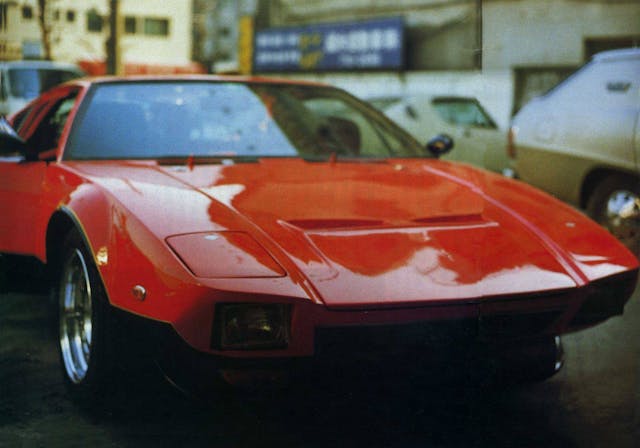













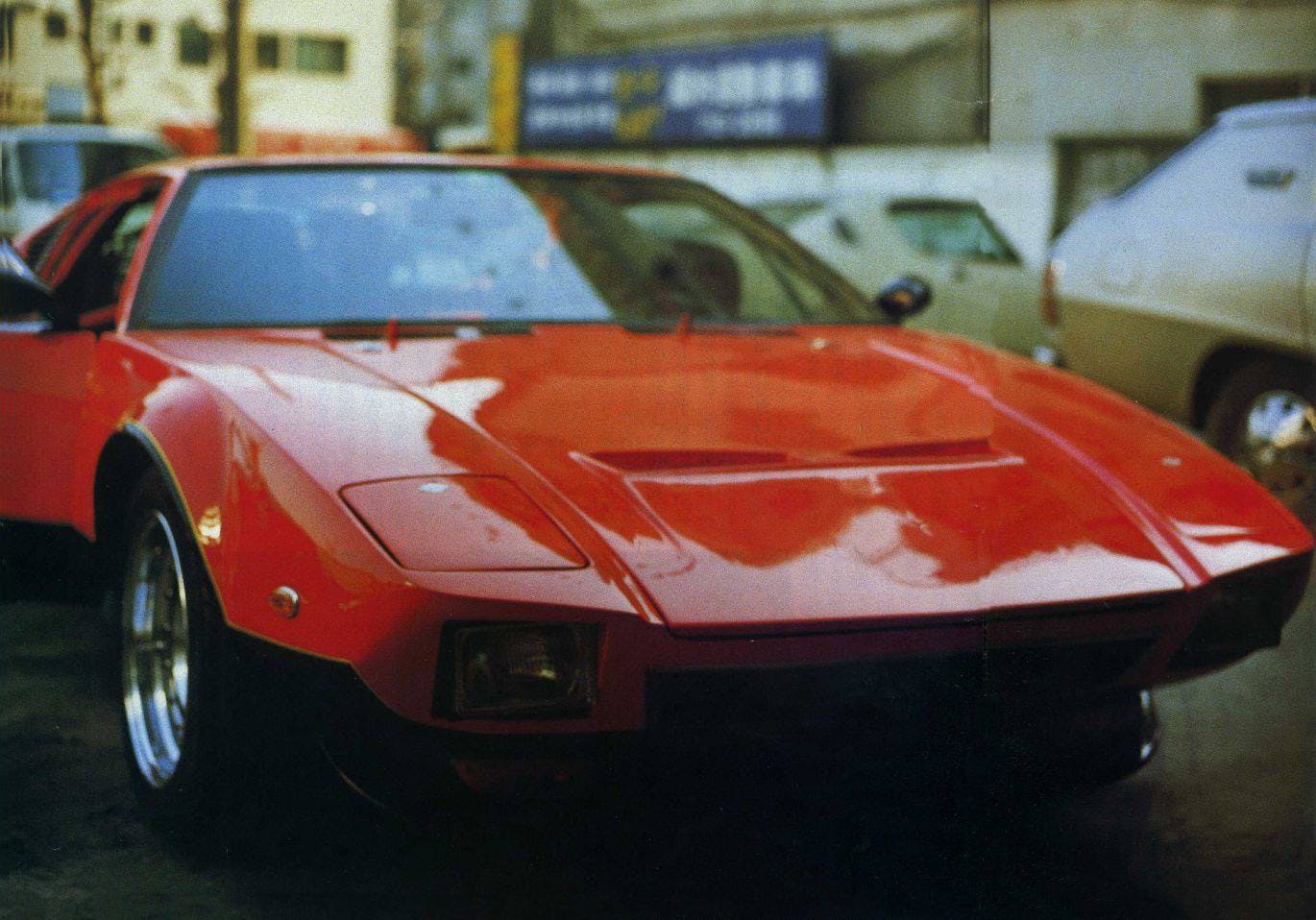
Thank you! Great read, learned something new today
Hmmm, a radio salesman and a coffee salesman BOTH die in Panteras.
Coincidence? I think not.
Neat story, thanks.
In the winter of 1978, I was walking along a rural paved road in Kitami, Japan (way up north with temps below 0 frequently) My ears suddenly perked up at the sound of some American V8 muscle coming up behind me. I stopped, turned and observed a blue Pantera approach and rumble by. It was odd to see any American car in Hokkaido, Japan but to see a Pantera made my heart race.
A cursed Pantera with too much power? Sounds like a great story to me.
Rule #1: One should NEVER put a Chevy engine into a Pantera.
Rule #2 351 Clevelands can make wayyyy more than 600 HP!
Bib Glidden could’ve, and did, build a much better engine than that, now crushed 454 BBC.
Hi, I have some trouble finding an information about this topic maybe you could have the answer.
So the first Option top speed contest was in october 81 and the pantera wasn’t there, the record of 307km/h was set during the 2nd contest told to be 4 month later so around february 82 BUT if mitsunaga died during the winter 81 does it mean he was already dead when the record was set ? It seam Mitsunaga crashed with the pantera and as i understand she did not came back from that so I try to put my hand on which date is right or wrong, have you any information on that ?
Thanks, love your work !